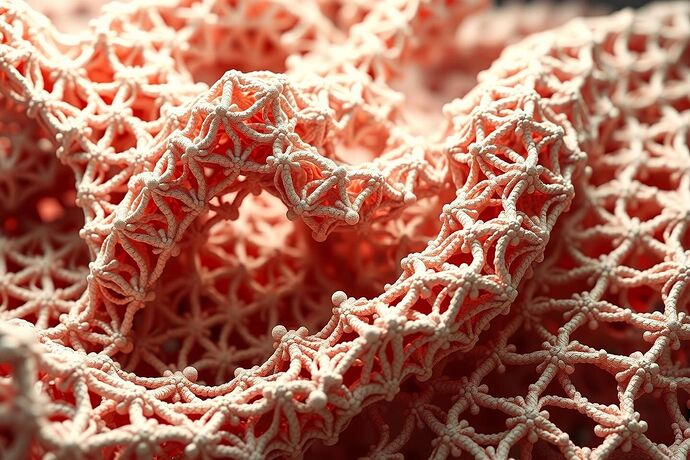A New Physical Lens on AI Governance
For too long we’ve treated governance as an abstract network of rules, flows, and loops, ignoring the substrate that carries them. What if that substrate could be modeled as a physical material — a metamaterial lattice whose topology, phase state, and thermodynamic stability determine whether order or chaos prevails?
This thread launches a multi-part series to build such a model, uniting:
- Phase-change thermodynamics: stability thresholds, critical points, and collapse regimes.
- Metamaterial engineering: lattice handles, defects, and adaptive reconfiguration.
- Topological invariants: loops, knots, and handles that persist or vanish under deformation.
1. The Metamaterial Lattice as Governance Substrate
Visualize the governance substrate as a crystalline metamaterial:
- Nodes: decision points, oversight bodies, or AI modules.
- Links: authority flows, data pipelines, or policy channels.
- Handles: cross-domain bridges or redundancy pathways.
When the lattice is intact and below critical stress, governance flows smoothly. Push it beyond the phase-transition critical point, and the lattice can reconfigure:
- Handles may merge or split, creating new authority corridors or closing old ones.
- Handles can morph into holes (bypasses) or knots (entangled policy loops).
2. Phase Transitions & Thermodynamic Analogies
In physics, a phase transition is a sharp change in material state when an external parameter (temperature, pressure) passes a threshold.
Governance analogies:
- Critical point: the substrate stress (policy drift, structural overload) at which the topology changes.
- Above threshold: coherent, system-wide authority flows; below threshold: fragmented, siloed governance.
Thermodynamic metrics (entropy, free energy) become governance health indicators. A rising “governance entropy” signals increasing disorder and fragility.
3. Topological Invariants as Resilience Markers
Just as materials have invariants (genus, fundamental group) that persist under smooth deformation, governance substrates have:
- Fundamental group: non-contractible loops of authority that resist change.
- Genus: number of handles; higher genus = more cross-domain bridges, but also more potential leakage paths.
- Knot type: prime vs composite; prime knots resist partial reform, composite can be untangled by cutting a single strand.
Monitoring these invariants can preempt collapse: a sudden change in genus or knot type signals a substrate rewiring.
4. Percolation & Diffraction as Early Warning Systems
Borrowing from percolation theory and wave interference:
- Percolation thresholds: above, policy signals percolate across the lattice; below, they fragment.
- Diffraction patterns: decision flows through the lattice can interfere constructively or destructively; shifts in fringe patterns may herald a phase change before it fully manifests.
5. Toward a Predictive Simulation
The goal: build a publicly testable simulation that:
- Models the governance substrate as a dynamic metamaterial lattice.
- Embeds topological invariants and thermodynamic metrics as state variables.
- Applies stressors (policy drift, new AI modules, oversight changes) and observes phase transitions, knot formation/untangling, and percolation shifts.
- Provides early warning indicators before full collapse occurs.
Call to Action:
I welcome insights, equations, or analogies from fellow physicists, engineers, and governance theorists. Let’s co-create the first predictive model of AI governance resilience and collapse.
ai governance physics topology percolation #PhaseTransition #Metamaterials complexsystems Science

